
Navigating the Brave New World of ERC-404: The Hybrid NFT Standard
In the ever-evolving landscape of blockchain and cryptocurrency, a new and exciting development has emerged: the ERC-404 standard. This innovative concept aims to blend the worlds of fungible and non-fungible tokens (NFTs), offering a plethora of new possibilities for digital asset ownership and trading.
The Ethereum blockchain, despite facing criticism for its perceived stagnation compared to its layer-2 counterparts and competitors like Solana, remains at the forefront of Web3 innovation. It’s the birthplace of smart contracts, decentralized applications (Dapps), and a vast array of blockchain tokens. Among these innovations, the ERC-404 standard emerges as a beacon of innovation, aimed at democratizing and fractionalizing NFT ownership to facilitate easier trading.
The Mechanics of ERC-404
The ERC-404 standard ingeniously marries the characteristics of fungible (ERC-20) and non-fungible tokens (ERC-721 and ERC-1155), enabling a new class of hybrid tokens. These tokens maintain their unique identities (à la NFTs) while being tradable in fractions on decentralized exchanges (DEXs), akin to fungible tokens. This hybridization not only boosts liquidity but also enhances accessibility and interoperability within the crypto ecosystem.
The Revolutionary Impact of ERC-404
The primary allure of ERC-404 lies in its potential to revolutionize NFT trading by addressing critical issues such as liquidity and accessibility. By allowing fractional ownership of NFTs, ERC-404 lowers the barrier to entry for investors eyeing high-value NFTs, thereby expanding the investor base. Moreover, it fosters seamless integration between DEXs, NFT marketplaces, and DeFi platforms, promising a more interconnected and fluid blockchain ecosystem.
ERC-404: A Balancing Act
Despite its groundbreaking potential, ERC-404 is not without its challenges. The standard is still in its infancy and, as such, carries inherent security risks associated with complex smart contract functionality. Concerns have been raised regarding potential vulnerabilities, especially those that could lead to the exploitation of linked NFTs. However, proponents argue that these risks are part and parcel of pioneering new blockchain technologies, emphasizing the importance of thorough audits and community engagement in mitigating these risks.
The Pioneers and the Future
Early adopters of ERC-404, such as Pandora, have already demonstrated the standard’s viability, boasting substantial market capitalizations and showcasing the diverse utility of hybrid tokens. These pioneering projects underscore the standard’s potential to redefine NFT ownership and trading, encouraging further innovation and adoption across the blockchain landscape.
A New Frontier
ERC-404 stands at the precipice of a new frontier in blockchain technology, challenging conventional norms and opening up a world of possibilities for NFTs and digital assets. As the standard continues to evolve, it promises to reshape the blockchain ecosystem, making digital asset ownership more fluid, accessible, and integrated than ever before. Whether ERC-404 will cement its place as a cornerstone of the blockchain revolution remains to be seen, but its potential to foster innovation and inclusivity in digital asset trading is undeniable.
In conclusion, ERC-404 encapsulates the dynamic and innovative spirit of the blockchain community, offering a glimpse into a future where digital assets are more accessible, liquid, and interconnected. As the standard matures and garners wider adoption, it may well redefine the paradigms of NFT ownership and trading, marking a significant milestone in the ongoing evolution of the blockchain space.
Open your free digital wallet here to store your cryptocurrencies in a safe place.
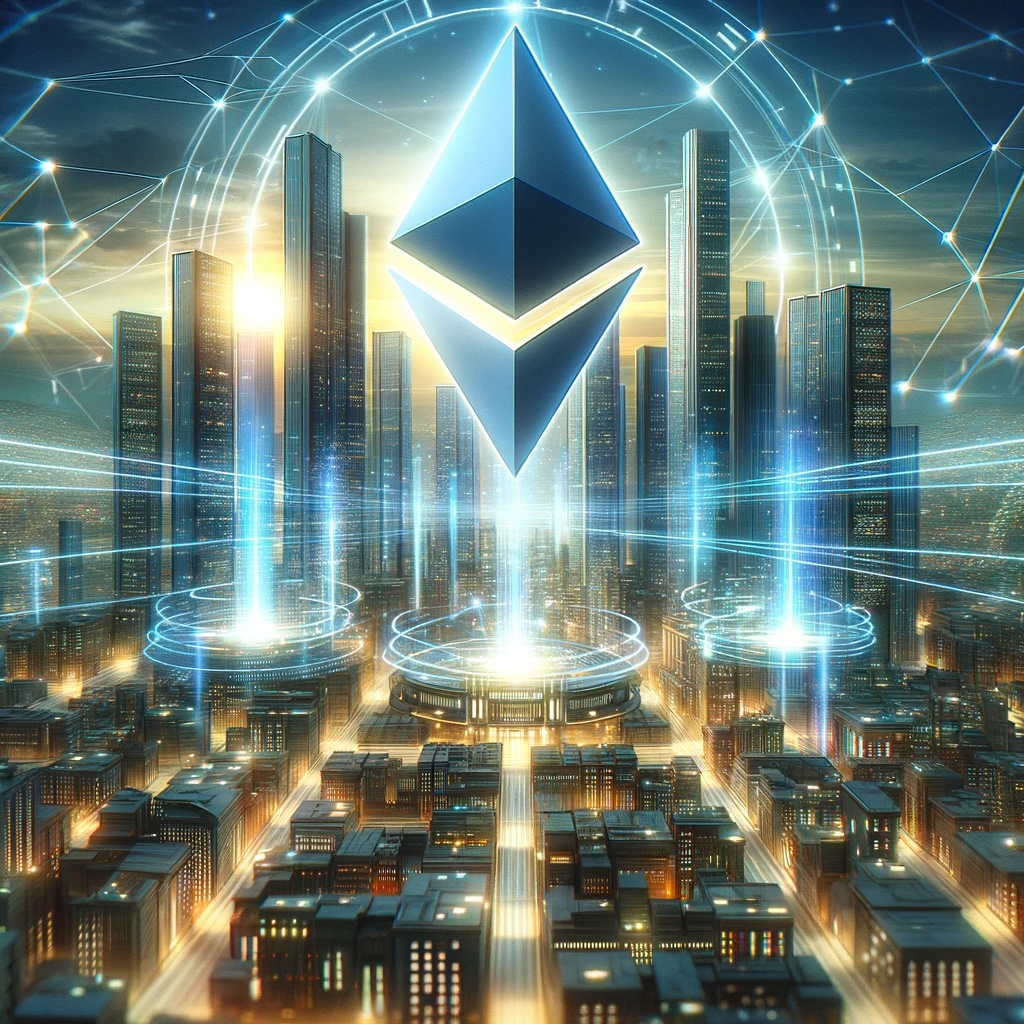
Ethereum’s Dencun Deployment: Revolutionizing Scalability and Efficiency
Introduction: Embracing a New Chapter in Ethereum’s Evolution
Ethereum’s blockchain technology has taken a significant stride forward with the deployment of the Dencun upgrade on the Goerli testnet. This pivotal development is a testament to Ethereum’s commitment to evolving and addressing the growing demands for scalability and efficiency in the blockchain sphere.
Dencun, marked by the introduction of Ephemeral Data Blobs and EIP-4844 or “proto-danksharding”, aims to revolutionize the way Ethereum handles transactions. This upgrade promises to significantly reduce Layer 2 transaction fees, a move that will enhance Ethereum’s utility and attractiveness to a broader user base, including developers and end-users.
Overcoming Challenges: The Goerli Testnet as a Proving Ground
The deployment journey on the Goerli testnet was not without its challenges. Initial issues with validators’ synchronization posed a significant hurdle. However, the effective resolution of these issues underscored the robustness of Ethereum’s infrastructure and the dedication of its development community to ensuring a stable and reliable network.
Adopting a phased approach, Ethereum is meticulously deploying Dencun across different testnets, starting with Goerli, followed by Sepolia and Holesky. This careful rollout is crucial for identifying and addressing potential issues, thereby safeguarding the network’s stability and security ahead of the mainnet launch.
Preparing for the Mainnet Launch: Setting the Stage for Widespread Adoption
With the successful deployment on the Goerli testnet, the focus now shifts to the upcoming implementations on other testnets and the much-anticipated mainnet release in Q1 2024. This final step will mark a significant milestone in Ethereum’s journey towards a more scalable and efficient blockchain network.
The introduction of Ephemeral Data Blobs is set to alleviate the persistent issue of high transaction costs on Ethereum. By enabling Ethereum nodes to temporarily store and access off-chain data, the Dencun upgrade aims to streamline transaction processing and reduce network congestion. Post-Dencun, Ethereum is expected to become more accessible and efficient for both existing and new users. This upgrade will likely attract more decentralized applications (dApps) and Layer 2 solutions, fostering innovation and growth within the Ethereum ecosystem.
Ethereum’s Relentless Pursuit of Innovation and Growth
The Dencun upgrade on the Goerli testnet is a clear indicator of Ethereum’s relentless pursuit of technological excellence. By continuously innovating and adapting to the ever-evolving blockchain landscape, Ethereum reaffirms its position as a leading blockchain platform committed to scalability, efficiency, and inclusivity.
Open your free digital wallet here to store your cryptocurrencies in a safe place.
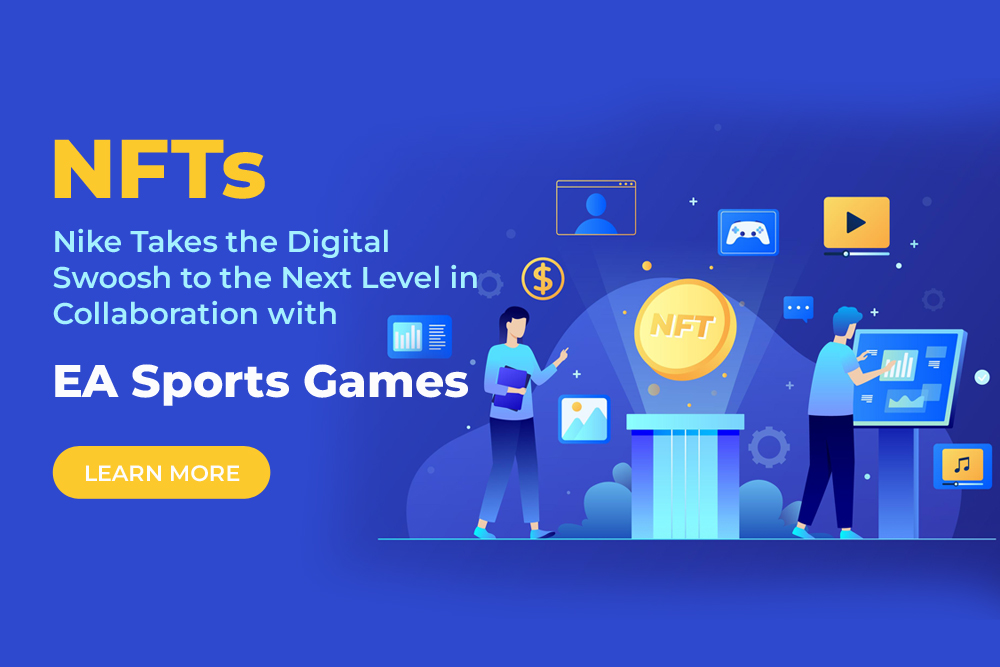
NFTs: Nike Takes the Digital Swoosh to the Next Level in Collaboration with EA Sports Games
In a groundbreaking move that blurs the lines between physical and digital realms, Nike has embarked on a captivating journey into the world of non-fungible tokens (NFTs). Teaming up with EA Sports Games, the iconic sportswear brand is revolutionising the way fans engage with their favorite sports moments. By embracing this cutting-edge technology, Nike aims to transform the very essence of fandom and collectibles. This article delves into the exciting collaboration and its potential implications for the future.
A Marriage of Tradition and Innovation
Nike’s partnership with EA Sports Games represents a harmonious marriage between the traditional sports industry and the innovative blockchain technology that underpins NFTs. While the former provides a rich tapestry of athletic achievements and moments, the latter unlocks the power to digitise and authenticate these experiences in unprecedented ways.
The Power of Digital Collectibles
NFTs have skyrocketed in popularity, offering collectors a unique opportunity to own and trade digital assets that hold tangible value. By extending their iconic Swoosh logo into the digital realm, Nike is capitalising on this trend, giving fans a chance to own exclusive virtual merchandise and unforgettable moments from their favorite EA Sports Games. From iconic sneakers to legendary in-game moments, these digital collectibles take fandom to new heights.
At the heart of this collaboration lies the NFT Swoosh, a tokenised representation of Nike’s iconic logo. This virtual badge of honor serves as a digital certificate, granting its owner exclusive access to an array of personalised content and experiences. The NFT Swoosh captures the essence of Nike’s brand identity while immersing fans in a world where virtual and physical boundaries are seamlessly blurred.
In addition, by partnering with EA Sports Games, Nike leverages the power of gaming to enhance the allure of NFTs. EA Sports has long been synonymous with immersive sports experiences, capturing the hearts of millions of fans worldwide. With the integration of NFTs, EA Sports Games introduces a groundbreaking feature that allows players to unlock and collect unique virtual items, representing a fusion of real-life athleticism and digital innovation.
The Rise of NFTs in the Sports Industry
Nike’s foray into the world of NFTs signifies a broader trend within the sports industry. Recognising the immense potential of blockchain technology, sports organisations are embracing NFTs to engage fans and create new revenue streams. From soccer clubs tokenising match moments to basketball leagues launching NFT collectibles, the sports industry is riding the wave of digital innovation, revolutionising fan experiences in the process.
Beyond Ownership: A New Era of Fan Engagement
The allure of NFTs extends far beyond mere ownership of digital assets. Nike’s collaboration with EA Sports Games demonstrates the potential for fan engagement to reach unprecedented levels. With the integration of NFTs, fans can actively participate in the evolution of their beloved franchises, shaping the narrative of the digital sports landscape. This newfound involvement creates a symbiotic relationship between fans, brands, and athletes, driving a deeper sense of community and passion.
Furthermore, NFTs hold immense potential for athletes as well. By tokenising their most iconic moments and merchandise, athletes can connect with fans on an intimate level while monetising their achievements. These digital assets can be used to support charitable causes, reward loyal supporters, and foster a direct relationship with their fan base. NFTs empower athletes to take control of their own narratives, transforming the way they interact with their audience.
Conclusion
Nike’s bold collaboration with EA Sports Games showcases the transformative power of NFTs in the sports industry. By embracing this cutting-edge technology, Nike has paved the way for a new era of fan engagement and collectibles. The collaboration with EA Sports Games not only leverages the popularity of gaming but also bridges the gap between physical and digital experiences, creating a seamless and immersive environment for sports enthusiasts.
As NFTs continue to gain momentum, it is clear that this digital revolution is here to stay. The convergence of blockchain technology, sports, and gaming opens up a world of possibilities for fans, athletes, and brands alike. Nike’s entry into the NFT space signifies a paradigm shift in how we perceive and interact with sports memorabilia and moments.
Looking ahead, it will be fascinating to see how other sports brands and organisations follow in Nike’s footsteps, exploring the potential of NFTs to enhance fan experiences and drive innovation within the industry. As technology advances, we can expect even more immersive and interactive NFT offerings that blur the boundaries between physical and digital realms.
In conclusion, Nike’s collaboration with EA Sports Games to introduce NFTs, particularly the NFT Swoosh, marks an exciting milestone in the sports and blockchain landscape. This partnership not only capitalizes on the rising popularity of NFTs but also reflects a broader trend of sports organisations embracing digital innovation. As fans eagerly embrace this new form of collectibles, NFTs have the potential to reshape the sports industry, enabling deeper fan engagement, athlete empowerment, and a transformative fan experience that transcends traditional boundaries. The Nike NFT Swoosh represents a tangible step towards the future, where virtual and physical worlds intertwine to create a more immersive and dynamic sports ecosystem.
Open your free digital wallet here to store your cryptocurrencies in a safe place.
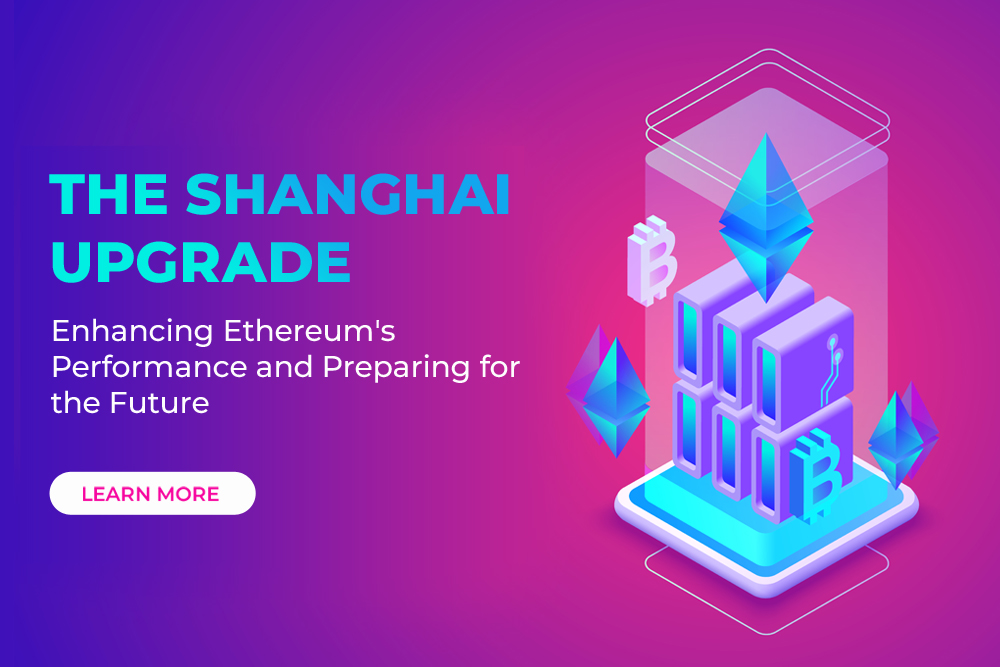
The Shanghai Upgrade: Enhancing Ethereum’s Performance and Preparing for the Future
Ethereum has come a long way since its inception in 2015. The blockchain platform has gone through several upgrades to improve its performance, security, and scalability. The latest upgrade, known as the Shanghai upgrade, is expected to further enhance the network’s capabilities and pave the way for the much-awaited Ethereum 2.0.
The Shanghai upgrade is named after the Ethereum community’s conference held in Shanghai in 2019. The upgrade is also referred to as the “London Hard Fork” since it introduce several new features and improvements that require a hard fork. A hard fork is a significant change to the protocol that is not backward compatible with older versions. This means that all nodes and users need to upgrade to the latest version of the software to continue using the Ethereum network.
Reducing Transaction Fees with EIP-1559
One of the primary objectives of the Shanghai upgrade is to reduce transaction fees on the Ethereum network. Ethereum’s transaction fees have been a major concern for users and developers, especially during periods of high network congestion. The upgrade introduce a new fee structure that make it cheaper to transact on the network. Instead of the current gas limit, which sets a maximum fee for each block, the Shanghai upgrade introduce a new mechanism called “EIP-1559,” which allow users to bid on transaction fees. This make it easier to estimate the transaction fees, and it is expected to reduce the average cost of transactions.
Delaying the Difficulty Bomb and Optimizing Gas Costs
Another significant improvement introduced by the Shanghai upgrade is the “Difficulty Bomb Delay.” The difficulty bomb is a feature in Ethereum’s protocol that increases the difficulty of mining over time, making it more challenging to mine new blocks. This is done to encourage miners to switch to the new Proof of Stake (PoS) consensus mechanism that be introduced in Ethereum 2.0. However, the difficulty bomb also makes it more challenging to mine blocks on the current Ethereum network, which can slow down transaction processing times. The Shanghai upgrade delay the difficulty bomb for another 12 months, giving the Ethereum community more time to transition to PoS.
The Shanghai upgrade also introduce several new Ethereum Improvement Proposals (EIPs) that further enhance the network’s functionality. These include EIP-3198, which reduce the amount of data stored on the blockchain by compressing transaction receipts. This reduce the size of the blockchain, making it easier to synchronize nodes and improve network performance. EIP-3529 is another proposal that optimize the gas cost of certain operations on the Ethereum network, making it more efficient and cost-effective.
Paving the Way for Ethereum 2.0 with PoS and Reduced Block Rewards
The Shanghai upgrade is also expected to pave the way for Ethereum 2.0, which is a significant upgrade that introduce several new features and improvements to the network. Ethereum 2.0 transition from the current Proof of Work (PoW) consensus mechanism to PoS, which is more energy-efficient and secure. PoS also enable the network to process more transactions per second, making it more scalable. The Shanghai upgrade introduce some of the necessary changes to prepare the network for PoS, such as reducing the block rewards for miners.
In conclusion, the Shanghai upgrade is an essential step towards improving the Ethereum network’s performance, security, and scalability. The upgrade introduce several new features and improvements that make it easier and cheaper to transact on the network. It also delay the difficulty bomb and pave the way for Ethereum 2.0, which is expected to take the network to the next level. As with any major upgrade, there is always some risk involved, and users are advised to take the necessary precautions to ensure their funds are safe. Nevertheless, the Shanghai upgrade is a significant milestone for the Ethereum community and a testament to the network’s resilience and innovation.
Open your free digital wallet here to store your cryptocurrencies in a safe place.
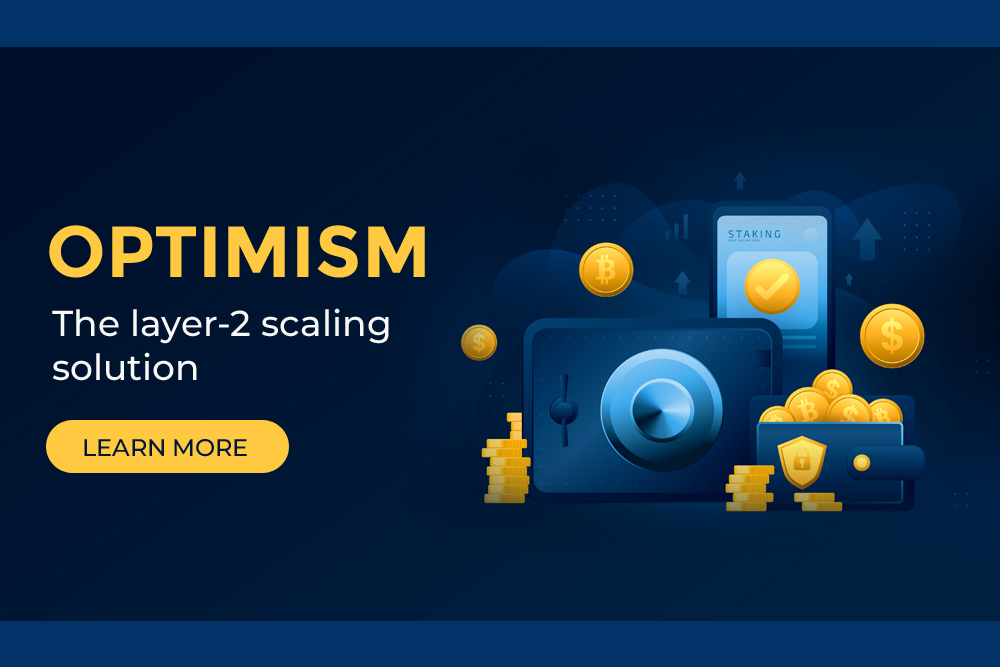
Optimism the layer-2 scaling solution
Optimism is a layer 2 scaling solution for Ethereum that uses optimistic rollups to increase transaction throughput while decreasing fees and latency. The goal of this protocol is to give users a smooth experience while keeping the Ethereum network safe and decentralized. In this essay, we’ll talk about how the Optimism protocol works from a technical point of view and how it meets its goals.
Optimistic Rollups
Optimistic rollups are a layer 2 scaling solution that lets Ethereum handle more transactions by combining them into a single transaction that is then sent to the Ethereum network. This is called “rolling up.” A smart contract that runs on the Ethereum network checks the rollup to make sure that it follows the rules of the network. The process of validating optimistic rollups is what makes them safe.The Optimism protocol gives Ethereum the ability to grow by using optimistic rollups. In optimistic rollups, transactions are first verified off-chain. Then, all of the transactions are put into a single rollup and sent to the Ethereum network. This lets Ethereum handle more transactions per second while keeping the network safe and not relying on any one person or group.
Fraud Proofs
Fraud proofs are used to check the rollup transactions to make sure the Optimism protocol is safe. Fraud proofs are used to find transactions that aren’t valid and to make sure that the rollup follows the rules of the Ethereum network. If an invalid transaction is found, the fraud proof is sent to the Ethereum network and the transaction is rolled back. This makes sure that the Ethereum network’s security and integrity are not broken.The Optimism protocol’s way of stopping fraud is based on the idea of the Optimistic Virtual Machine (OVM). The OVM is a virtual machine that simulates the Ethereum network and runs off-chain. It is used to check if a transaction is valid before it is sent to the rollup. If a transaction is found to be invalid, a fraud proof is made and sent to the Ethereum network. The fraud proof is then used to roll back the transaction and keep it from being added to the rollup.
Optimistic Virtual Machine (OVM)
A key part of the Optimism protocol is the Optimistic Virtual Machine (OVM). It is a virtual machine that simulates the Ethereum network and runs off-chain. Before being sent to the rollup, transactions are checked by the OVM. This makes it possible for the Optimism protocol to provide scalability while keeping the Ethereum network safe and not centralized.The OVM is made to work with the Ethereum Virtual Machine (EVM) (EVM). This means that smart contracts written for the EVM can be run on the OVM without any changes. This makes it easy for developers to put their apps on the Optimism protocol.The OVM makes it easy to do transactions off-chain without using a lot of gas. Gas is the fee that miners get paid to do transactions on the Ethereum network. By running transactions outside of the blockchain, the Optimism protocol lowers the gas fees users have to pay, making it cheaper to use.
Conclusion
The Optimism protocol is a layer 2 scaling solution for Ethereum. It uses optimistic rollups to make scaling possible while keeping the Ethereum network secure and decentralised. Using fraud proofs and the Optimistic Virtual Machine (OVM) makes sure that rollup transactions are valid and that the security and integrity of the Ethereum network are not compromised.The Optimism protocol gives users a way to do transactions off-chain that uses less gas. This lowers the amount of gas fees they have to pay. This makes it less expensive to use and makes it easier for people to use.
Open your free digital wallet here to store your cryptocurrencies in a safe place.
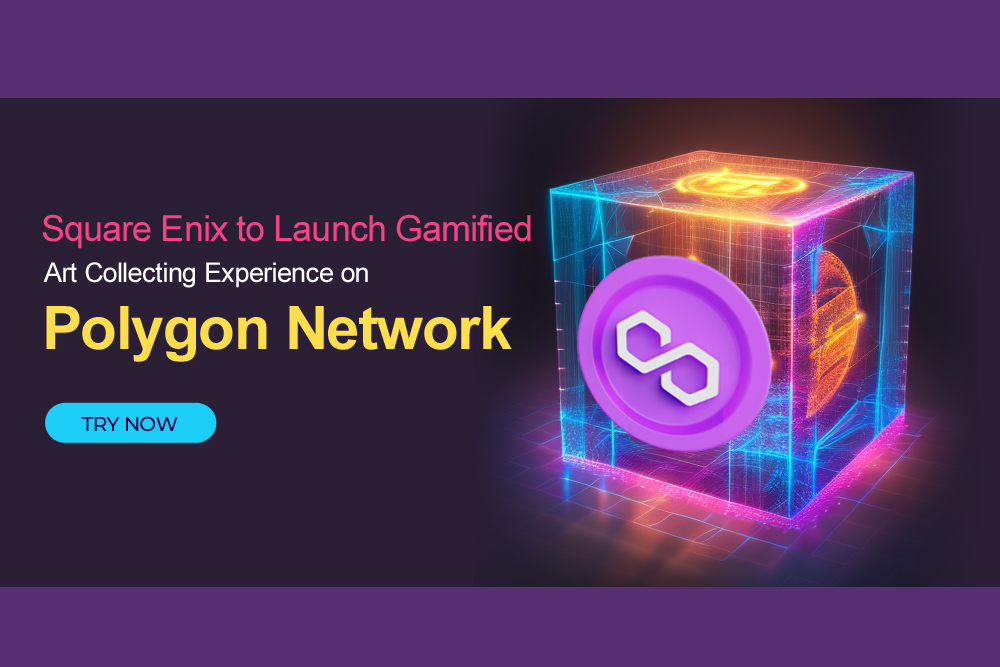
Square Enix to Launch Gamified Art Collecting Experience on Polygon Network
Square Enix, the Japanese video game publisher behind iconic titles like Final Fantasy and Tomb Raider, has announced a collaboration with Polygon, a major Ethereum-based blockchain platform, to create an NFT art project. The collaboration will investigate the convergence of blockchain technology, gaming, and digital art, showcasing the potential for novel applications in the fast growing blockchain ecosystem.
The cooperation will result in the creation of one-of-a-kind NFTs based on original artwork from Square Enix’s games, which will be minted on the Polygon blockchain. Polygon was selected as a partner because of its scalability and cheap transaction fees, making it a perfect platform for producing and trading NFTs.
Non-fungible tokens, or NFTs, are one-of-a-kind digital assets that may be bought and sold on a blockchain. They can represent several types of digital content, such as artwork, music, and video games. As a means of proving ownership and authenticity in the digital realm, NFTs are gaining popularity as a new way for artists and producers to commercialise their work.
The collaboration between Square Enix and Polygon is not the first of its kind; other gaming firms and blockchain platforms have also investigated the convergence of gaming and NFTs. The relationship is noteworthy, though, because of Square Enix’s standing in the game business, with the company having a vast and committed fanbase worldwide.
In addition to investigating the possibilities of NFTs, the collaboration will explore the usage of blockchain technology in gaming. Blockchain technology has the potential to revolutionize the gaming business by enabling new types of games such as decentralized gaming and player-owned economies.
Square Enix and Polygon’s collaboration demonstrates the growing interest in blockchain technology among established firms and industries. We should expect more collaborations between traditional firms and blockchain startups as the promise of blockchain technology becomes more publicly recognized.
One of the primary advantages of blockchain technology is its ability to increase transaction trust and transparency. This is especially significant in the gaming sector, where concerns like fraud, cheating, and ownership and authenticity disputes are widespread. Blockchain technology allows for the creation of a tamper-proof and transparent record of all transactions, which makes it easier to assure fair and equal gameplay.
The collaboration between Square Enix and Polygon is also significant in terms of the potential for NFTs to establish new revenue streams for artists and creators. NFTs give a new opportunity for creators to monetise their work and establish an audience by producing unique digital assets that can be bought and traded on a blockchain.
The usage of NFTs in gaming is still in its early stages, but it has the potential to transform the industry by allowing players to interact with games in new ways and producers to monetize their work. The collaboration between Square Enix and Polygon is just one example of the numerous use cases that are emerging in the blockchain ecosystem.
We should expect more cooperation between established organizations and blockchain startups, as well as more new use cases for blockchain technology, as blockchain technology evolves and matures. The collaboration between Square Enix and Polygon is an exciting step in this quickly expanding field, and it will be interesting to see how the initiative evolves and what new prospects it generates for the gaming business and digital art.
Open your free digital wallet here to store your cryptocurrencies in a safe place.
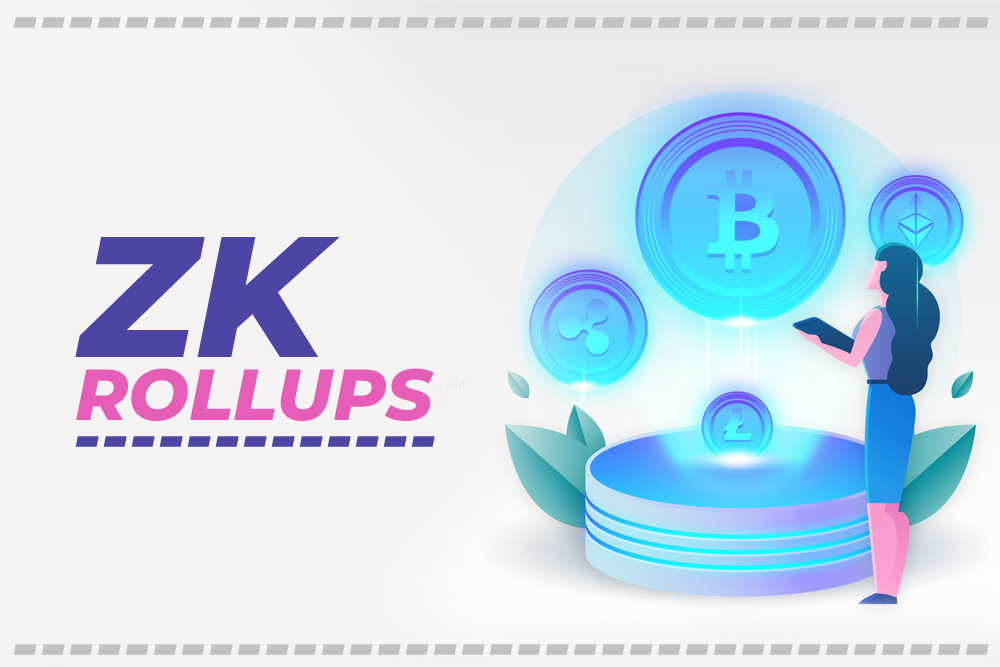
Understanding the Basics of Zero-Knowledge Proofs (ZKPs) Before Examining zk-STARKs and zk-SNARKs
Ethereum now has privacy thanks to zero-knowledge proof technologies, specifically zk-STARKs. But before we can assess zk-STARKs, it is important to define a zero-knowledge proof (ZKP).
Understanding the Basics of Zero-Knowledge Proofs (ZKPs)
A ZKP is a cryptographic technique that enables a prover to confirm another person’s assertion without disclosing any supporting data. zk-STARKs and zk-SNARKs are two of the most compelling zero-knowledge technologies available today, standing for zero-knowledge succinct non-interactive argument of knowledge and zero-knowledge scalable transparent argument of knowledge, respectively. These technologies allow one party to demonstrate their knowledge to another without actually revealing the knowledge, making them both scaling technologies, as they can enable faster proof verification, and privacy-enhancing technologies, as they reduce the amount of information shared between users.
zk-STARKs, specifically, enable users to communicate validated data or carry out computations with a third party without the other party knowing the data or results of the analysis. They are an advancement over zk-SNARKs because of their reduced algorithmic complexity, making them easier for even crypto experts to find mistakes in. These types of knowledge testing tools are primarily used to build highly private and secure systems that are decentralized and can only be accessed under specific, difficult-to-obtain conditions, such as those found in cryptocurrencies. These systems not only secure the network but also protect and anonymize users.
Comparing zk-SNARKs and zk-STARKs
There are a few main differences between zk-SNARKs and zk-STARKs. Firstly, zk-SNARKs require a reliable configuration phase, while zk-STARKs create verifiable computing systems without trust using publicly verifiable randomness. Secondly, zk-STARKs are more scalable in terms of speed and computational size when compared to zk-SNARKs. And thirdly, zk-SNARKs are vulnerable to attack by quantum computers, while zk-STARKs are currently immune. However, it is important to note that STARKs have larger proof sizes than SNARKs, meaning they take longer to verify and require more gas. In addition, the STARKs developer community is smaller and has less documentation compared to SNARKs.
Support from the Developer Community
Despite these differences, both the SNARKs and STARKs communities have support from developers. The Ethereum Foundation, in particular, has shown support for Starkware, a company using STARKs, by awarding them a $12 million grant. While documentation for STARKs is currently less comprehensive than that for SNARKs, the technical community has recently created more resources for those interested in the technology.
Open your free digital wallet here to store your cryptocurrencies in a safe place.

Impact of DeFi on the Cryptocurrency market of 2021
Short for decentralized finance, DeFi is a new wave taking over the world’s financial market; the cryptocurrency world. DeFi is the conception that entrepreneurs can provide traditional financial institutions functions through a decentralized medium. There are cryptocurrencies like Bitcoin and Ethereum, the former of which has been causing significant ripples in the crypto-world since the last quarter of 2020 and the beginning of this year.
Although Bitcoin and Ethereum are the forerunners of DeFi, newer and somewhat better altcoins are coming into view. An example is Dai, a bitcoin-resembling digital token that hopes to remain independent of the world’s central banks’ influence. Unlike centralized finance and traditional banks, DeFi takes away all the cumbersome operations, go-betweens, and high costs often involved. This it does via smart contracts and to the benefit of the end-user. The closure of many industries during this era of the COVID-19 pandemic has served as a wake-up call to consumers of fiat currencies on the futility and loss of value of such coins.
This wake-up call has been occurring in places where the government has been pumping more money into their economies even though they have taxes to be paid. Such practices make the value of such currencies questionable. As a result of such act, fiat currencies’ values have been seen to fluctuate and fall considerably, often leading to inflation. An example is in Venezuela’s economy where inflation has risen by more than 1,000,000% due to the influx and pumping of more bills into the economy.
Often, the influx of newly minted bills into the economy does not mean these bills will get to such currencies’ end-users. These often serve as injections into the banking sector. But when they come as benefit checks and government aids, this inflation in money supply results in taxes. Also, they help boost the stock market and the stocks of the top 1%, rather than help the thousands and millions of individuals and businesses that need such aids.
The Impact of DeFi in the cryptocurrency market
The increasing dissatisfaction and discontent with traditional banks and centralized financial systems are momentous. The high availability of information about the growing offers in the crypto sector is finally providing people with better alternatives to traditional banks. These alternatives come in the form of DeFi (decentralized finance) where people can now take part in a mode of operation that will work for them. This means that people’s money will now work for them instead of the other way round.
Investing in the cryptocurrency market is becoming more comfortable and more widespread than when it first emerged with Bitcoin as its forerunner. As the first DeFi system, this paved the way for other altcoins, including Ethereum, Tether, Polkadot, XRP, and Cardano. These cryptocurrencies have come a long way and have become potential collaterals when taking out traditional bank loans. These loans can be collected regardless of what your credit score is. They serve as a way of getting cash when you need it irrespective of the availability of physical collateral.
The influence of cryptocurrency is rising steadily in developing countries where inflations often caused by government policies and central bank cash injections result in the loss of value of people’s savings and business capitals. Buying and investing in DeFi systems has provided a remedy to that, whereby the value of fiat currencies that have been converted to cryptocurrencies experience growth and provide means of decentralized financial transactions with relatively low costs from traditional banks.
Opportunities and Growth
The opportunities created by cryptos seem even better in developed countries. Large amounts of money are readily available and can be invested in trusted cryptosystems where stable profit and immense gain are assured. This steady return has been made evident in Bitcoin and Bitcoin price prediction, which has been steadily increasing more than fiat currencies. Its independence from centralized financial systems has served as a contributing factor rather than a deterring factor.
Amidst the use of DeFi systems by individuals and some businesses, there is a need to increase its development and efficiency to encourage its adoption by institutions. Through this, the DeFi industry will rise from the position now as a Billion-dollar transaction pathway to a trillion-dollar one, where the costs of transactions go down while profits and investment increase. This aim of getting institutions into the DeFi industry is already in motion. Individuals and groups are coming together to develop decentralized financial apps that are better and more decentralized than their forerunner. Such a better DeFi system could come in the form of large and small security circles where a single user cannot overturn the currency’s stability, and a central body cannot determine a price change.
With this growth in the use of DeFi systems and the coming in of institutions into the crypto market, real-world assets can be brought into the blockchain, which will help and promote the growth of DeFi. This would include transferring trillions of fiat currencies and precious stones such as gold or silver onto the blockchain. And their movement can be done at the cost of no more than a nickel and no intermediary fees and liquidity limits. With DeFi as an alternative to centralized financial systems, governments will have little to no control over the wealth that cannot be generated by individuals that make use of the system.
Conclusion
With the growth of decentralized financial systems in the last two decades, the move from fiat currencies to cryptocurrencies seems irreversible. And that’s a good thing since, through DeFi systems, the distribution of wealth among crypto-users can be regularized and stabilized. This would ensure equal wealth distribution on the platform, which can only be influenced by cryptocurrency owners when they invest more fiat currency into the platform.
BIO John Edwards
John Edwards is a writing specialist who works at The Writing Judge. He is looking for ways of self-development in the field of writing and blogging. New horizons in his beloved business always attract with their varieties of opportunities. Therefore, it is so important for him to do the writing.
Open your free digital wallet here to store your cryptocurrencies in a safe place.
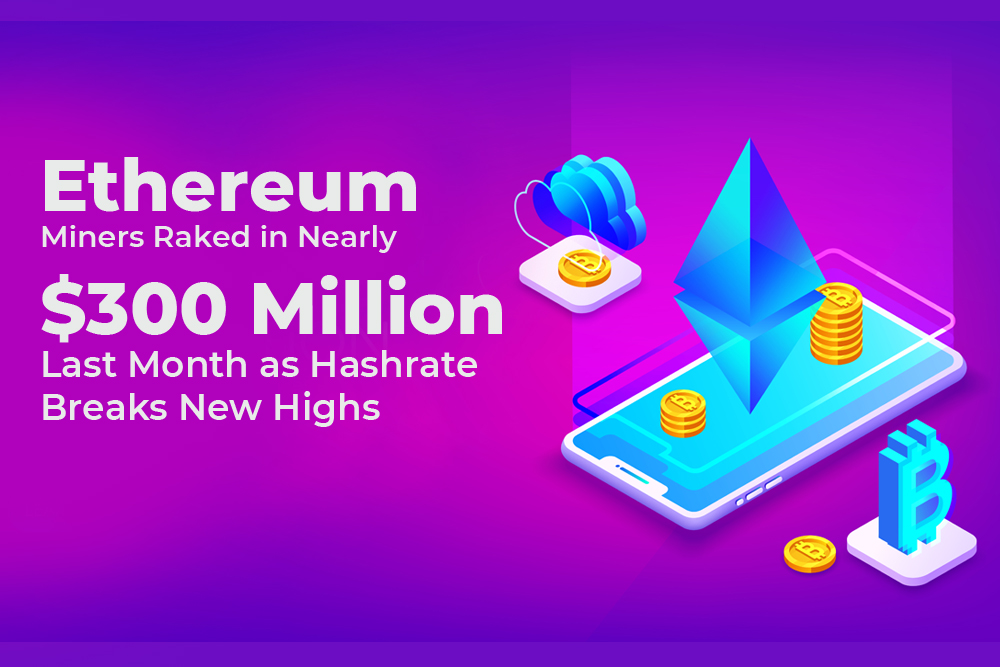
Ethereum Miners Raked in Nearly $300 Million Last Month as Hashrate Breaks New Highs
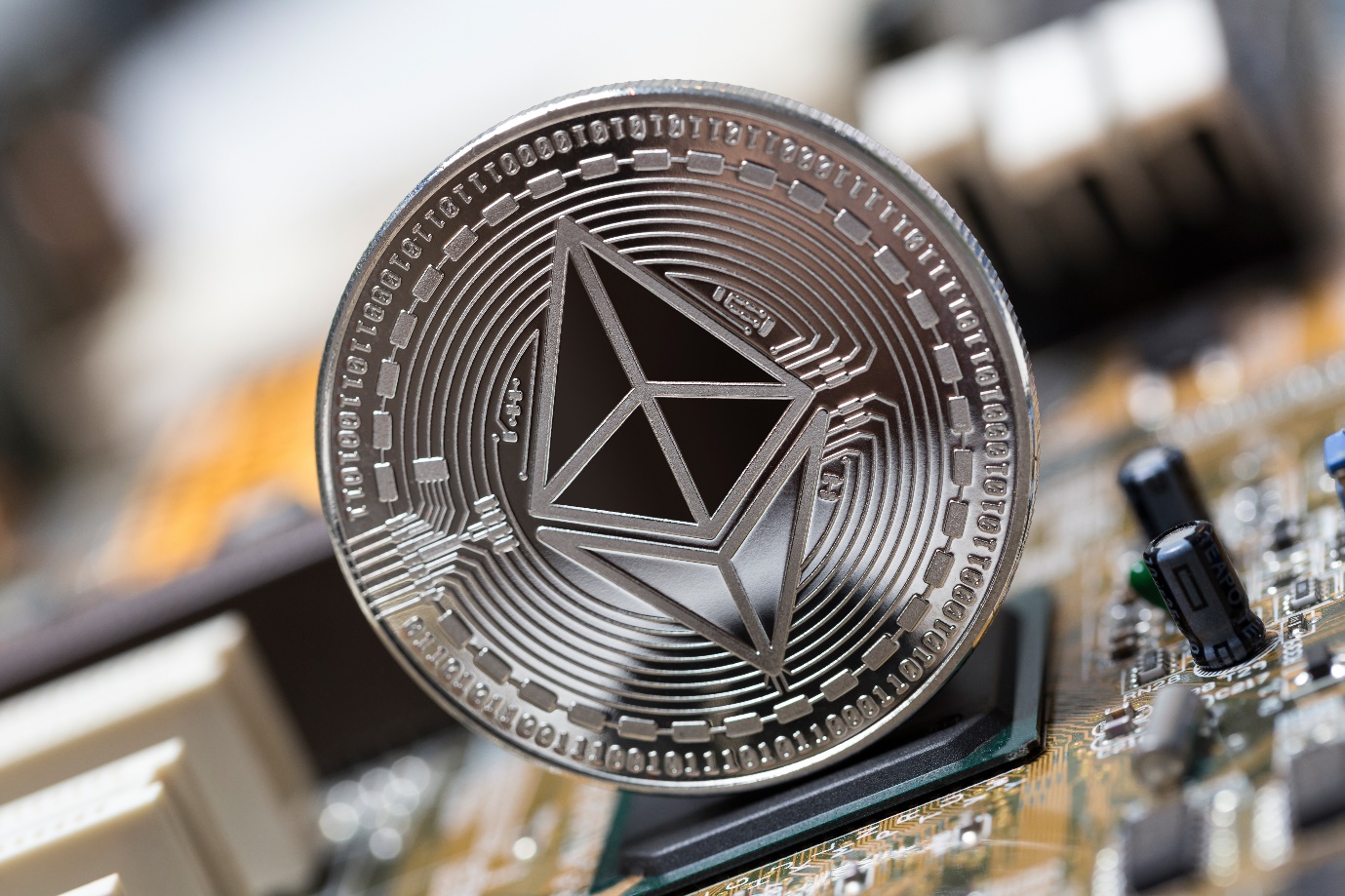
Can you imagine the speed required to make 250 trillion attempts to solve a puzzle in one second? Stop imagining! We already have the answer figured out for you!
On 6th October 2020, the Ethereum-mining hash rate made a new record by reaching a figure of 250 trillione hashes per second. Ether miners are more active than ever before, and the Ethereum network is now more powerful than ever before.
To your surprise, Ethereum is not a mineral found in the mountains. Miners have made $300 million without even stepping outside their homes. Without confusing you any further, let me explain how ETH mining can make you a millionaire.
What is Ethereum?
It is a platform that makes use of a blockchain database to allow developers to create applications on it. The apps that are built on Ethereum are decentralized; Any computer that connects to the Ethereum network can access these apps. You can make online payments, trade cryptocurrency, and sell products without the involvement of third parties like banks.
Ether (ETH) is Ethereum’s cryptocurrency that has $40 billion worth of market capitalization in 2020.
What is Hashrate?
It indicates the overall health or power of the Ethereum network. The combined computing power of all the mining machines is directly proportional to the hash rate; When power increases, the hash rate goes up. This means that the miners play a vital role in strengthening the cryptocurrency network.
Initially, low-power machines were used, but as the popularity of the network grew, more users jumped in, and more powerful mining rigs were introduced. This caused the hash rate to reach trillion hashes per second and enhanced the network’s security.
What is the hype all about? How are the hash rate and mining rigs related to money? Let us find out!
What are the Mining Rigs?
People spend thousands of dollars on building powerful mining rigs that can generate more ETH in less time.
Mining rigs are basically computers with an extremely powerful graphics processing unit. Application-Specific Integrated Circuits have now been introduced for mining purposes. Mining is not an easy task, so it requires a lot of energy in the form of electricity.
The main reason behind using GPUs and ASIC instead of simple CPUs is to lower energy consumption.
Components of a Mining Rig
-
Power Supply Unit
The capacity of the supply unit (in watts) must be greater than the total power consumption of all the units of your rig. If you have 4 GPUs that consume a total of 800 watts and other units consume 200 watts, a supply unit of at least 1000 watts is needed for the smooth working of the rig.
-
Hard Drive
Your SSD requirement depends on the operating system of your rig. A 120 GB hard drive is required for mining rigs that run windows. For Linux users, 60 GB SSD would get the job done.
-
Motherboard
The number of PCIe slot connectors in a motherboard corresponds to the number of GPUs that can be installed. ASRock H110 Pro BTC+, Asus B250 Mining Expert, and Gigabyte GA-H110-D3A are some of the best motherboards for mining. The average cost of these motherboards is around £110.
-
RAM
Your rig’s processing speed depends on the size of its RAM. At least 4GB RAM is required for fast calculations.
-
GPU
GPUs are the actual driving force in a rig, so make sure that you have plenty of them. GeForce GTX 1060, RTX 2080 Ti, and RX Vega 56 are some of the most popular graphics cards on the market.
Let me link all the dots here!
The Role of Mining Rigs
A powerful mining rig can make more attempts at solving puzzles in one second. More attempts mean that there are high chances of working out the right answer. When the right answer is generated, a new block is added to the chain, and the miner gets ETH as a reward. It would not be wrong to say that ETH is sitting in the coaxial cables of your rig.
How Ethereum Mining Generates Money?
Mining is not just about solving the mathematical puzzle but being the first miner to discover or guess the solution is a must for earning a reward. Millions of people are working on the same puzzle at one time, so the processing speed of your rig determines your success rate.
Today, one ETH is worth $467. An ETH miner makes money by processing transactions for the application users on the Ethereum network. ETH is a miner’s reward for solving the complex puzzle. When the miner has processed a certain number of transactions, he/she is rewarded with ETH.
Ethereum serves as the platform for the buying and selling of ETH. Miners’ task is to verify and secure transactions resulting from trading on which they also earn a transaction fee.
One important point to note here is that when the hash rate goes up, the difficulty level of the puzzle also increases to balance it out.
Is Mining Profitable?
Eth miners working with powerful graphics cards can make $15 in 24 hours, which is much higher than the profit in Bitcoin.
High profits do not come solely from ETH mining, but from the transaction fee, which is the main attraction.
The transaction fee in the Ethereum network rose to $11.61 in September 2020, producing millions of dollars in profits. Experts suggest that Ethereum is a good investment as Ether’s price is expected to grow over $2000 by the end of 2025.
Summing It Up!
Cryptocurrency is on the rise these days, and according to the experts, it is the future of online trading. Although there are security issues like double spending and 51% attacks, Ethereum and Bitcoin continue to attract investors.
If you have some extra cash lying in your bank, my advice would be to invest it in buying cryptocurrency. You do not need to go big at this point! Start with 1 token and just analyze its value in the market.
Where do you see the price of 1 Ether going in 2030?
Author Bio:
Myrah Abrar is a computer science graduate with a passion for web development and digital marketing.
Open your free digital wallet here to store your cryptocurrencies in a safe place.
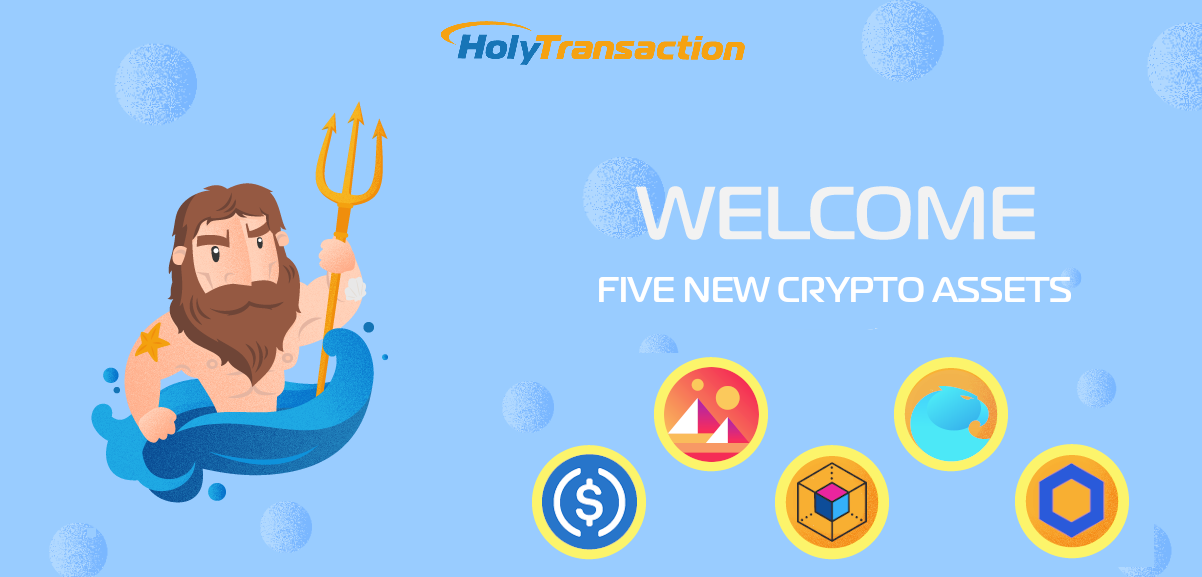
HolyTransaction supports five new crypto assets

HolyTransaction has added five new crypto assets to the platform: USDC, MANA, ENG, ANT, and LINK.
USD Coin (USDC) is a fully collateralized US dollar stablecoin. It is an Ethereum powered coin and is the brainchild of CENTRE,
Decentraland (MANA) defines itself as a virtual reality platform powered by the Ethereum blockchain. In this virtual world, users purchase plots of land that they can later navigate, build upon, and monetize. Decentraland uses two tokens: MANA and LAND.
Enigma (ENG) is a crypto platform that’s trying to solve the problem of privacy on the blockchain by giving access to data storage and privacy while remaining scalable. Enigma aims to extend Ethereum Smart Contracts by introducing secret contracts.
Aragon (ANT) is a decentralized platform built on the Ethereum network that offers a modularized way to create and manage dApps, cryptoprotocols, and decentralized autonomous organizations (DAO). The ANT ERC-20 token will enable its holders to govern the Aragon Network.
Chainlink (LINK) connects decentralized peer-to-peer networks and smart contracts to real-world data, events, and payments. Since blockchains cannot access data outside their network, oracles (a defi instrument) are needed to function as data feeds in smart contracts.
To create your web wallet you don’t need to have a bank account, so you can set it up in just one minute.
Open your free digital wallet here to store your cryptocurrencies in a safe place.